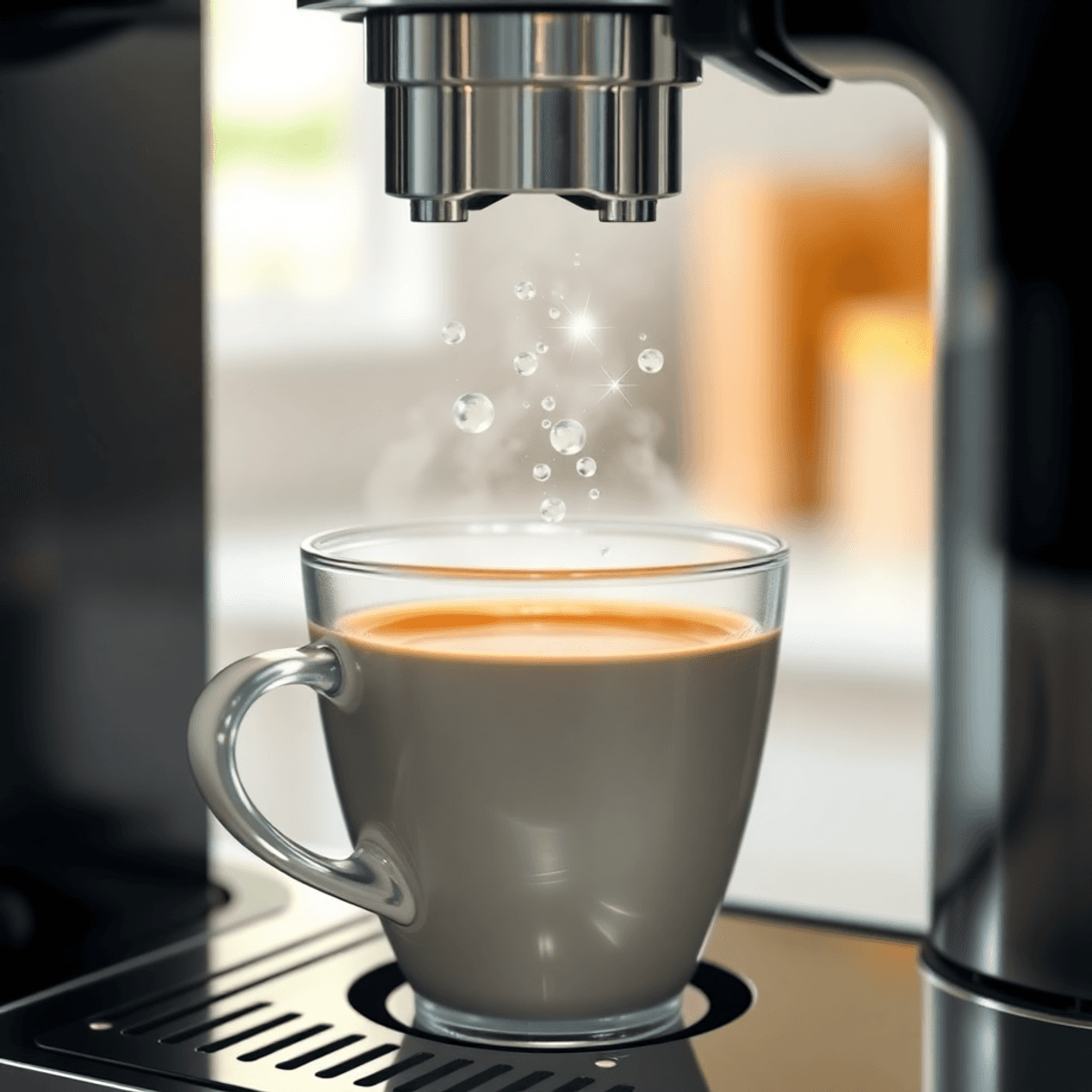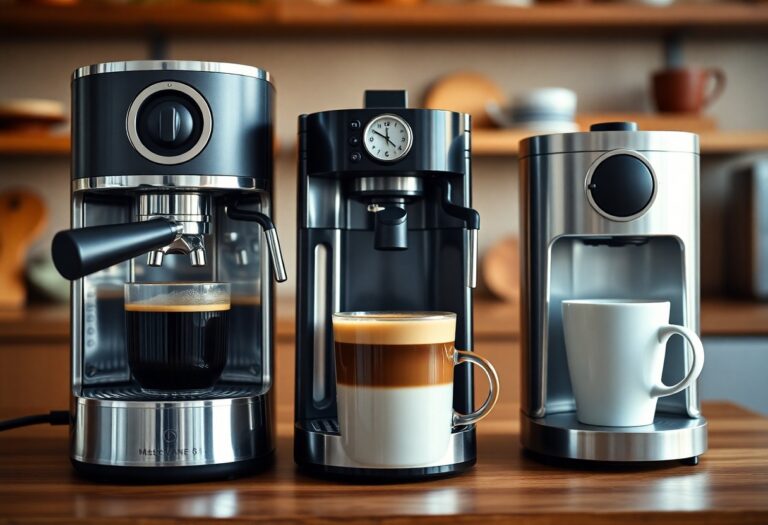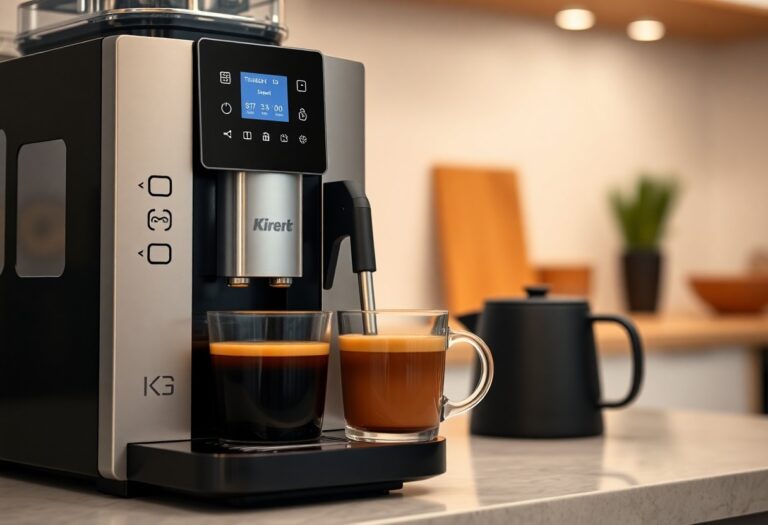How to Descale a Coffee Machine: Essential Maintenance
Descaling your coffee machine is a crucial step in coffee machine maintenance that many overlook. Mineral deposits, mainly calcium and magnesium from hard water, accumulate inside your machine as limescale. This buildup interferes with brewing efficiency and alters the flavor of your coffee, often resulting in a bitter or flat taste.
Regular limescale removal protects internal components, prevents clogging, and ensures your coffee tastes as fresh as intended. Neglecting this maintenance can lead to longer brew times, inconsistent temperatures, and potentially costly repairs.
This article covers everything you need to know about how to descale a coffee machine effectively:
- Understanding what limescale is and how it affects your machine
- Recognizing signs that indicate descaling is overdue
- Choosing the right descaling solutions for your setup
- Step-by-step instructions for safe and thorough cleaning
Implementing these practices will extend your coffee machine’s life and maintain the quality of every cup you brew.
Understanding Limescale and Its Impact on Coffee Machines
Limescale is a hard, chalky deposit that forms inside coffee machines due to the presence of hard water minerals. When water containing high levels of calcium and magnesium passes through your coffee machine, these minerals precipitate and accumulate as limescale. This process, known as limescale formation, primarily occurs on heating elements and internal pipes where water temperature rises.
Calcium and magnesium are the main contributors to this buildup. Their compounds become less soluble as water heats up, causing them to settle onto surfaces inside the machine. Over time, these deposits thicken, restricting water flow and affecting the machine’s efficiency.
Effects of Limescale Buildup
Effects of limescale buildup include:
- Slower brewing times caused by reduced water flow and clogged passages.
- Altered coffee flavor due to inconsistent extraction resulting from uneven water distribution.
- Increased wear on internal components, such as pumps and heating elements, leading to potential failures or costly repairs.
- Higher energy consumption, since heating elements need more power to reach operating temperatures through insulating scale layers.
Ignoring limescale buildup leads to gradual degradation in both performance and taste quality. Recognizing how calcium and magnesium contribute to this problem helps you understand why regular descaling is essential. It prevents coffee machine clogging and maintains optimal brewing conditions for your daily cup.
Signs Your Coffee Machine Needs Descaling
Recognizing the signs of scale buildup early helps maintain your coffee machine’s performance and flavor quality. Watch for these common symptoms:
- Slow brewing cycles: When mineral deposits accumulate, water flow through internal components is restricted, causing longer brew times.
- Off-taste coffee: Limescale can alter extraction, resulting in bitter or flat flavors that differ from your usual cup. This could also be due to the impact of cleanliness on coffee flavor, which emphasizes the importance of regular maintenance.
- Machine performance issues: Increased noise during operation, inconsistent water temperature, or unexpected shutdowns often signal reduced efficiency caused by scale.
You may notice water dripping irregularly or pressure changes if your machine has a pump. These are subtle hints that mineral deposits interfere with normal function. Paying attention to these signs allows you to act before damage worsens or repairs become costly. Regular inspection combined with proper descaling keeps your machine running smoothly and your coffee tasting fresh.
How Often Should You Descale Your Coffee Machine?
The descaling frequency depends primarily on two factors: water hardness and how often you use your machine. Hard water, rich in calcium and magnesium, accelerates limescale buildup, making regular maintenance crucial.
Consider these guidelines for a usage-based maintenance schedule:
- Soft Water Areas: Descale every 3 to 6 months if you use the coffee machine daily.
- Moderate Hardness: Every 1 to 3 months is ideal.
- Hard Water Regions: Monthly descaling is strongly recommended for daily users to prevent scale from compromising performance.
Adjusting your descaling routine according to local water conditions preserves your machine’s efficiency and prolongs its lifespan. Test kits or local water quality reports can help determine hardness levels, allowing you to tailor your maintenance accordingly.
Following this approach ensures consistent brewing speed and flavor quality without unnecessary wear on internal components.
Choosing the Right Descaling Solution for Your Coffee Machine
Descaling solutions fall into two main categories: commercial descaling agents and household remedies like diluted white vinegar. Each has its own strengths and drawbacks.
Commercial Descaling Agents
Products such as Urnex Dezcal powder are formulated specifically to tackle limescale inside coffee machines. These powders dissolve mineral deposits efficiently without leaving unpleasant odors or residues behind. They tend to be gentle on machine components while providing thorough cleaning. The convenience of pre-measured packets and clear instructions makes them user-friendly for routine maintenance.
White Vinegar Solution
A popular natural option involves mixing equal parts white vinegar and water. This solution is effective at breaking down scale due to vinegar’s acetic acid content. Be aware that vinegar’s strong smell can linger if not rinsed properly, which may affect the taste of your next brew. It can also leave a slight residue requiring multiple rinse cycles. Some users prefer vinegar for its affordability and accessibility despite these minor inconveniences.
Ineffectiveness of Baking Soda
Baking soda often appears in DIY cleaning tips but it is largely ineffective for removing mineral scale inside coffee machines. It lacks the acidic properties needed to dissolve calcium and magnesium deposits, making it unsuitable for descaling purposes.
Natural vs Chemical Cleaners
Choosing between natural cleaners like vinegar and chemical-based commercial agents depends on your priorities: budget, convenience, scent tolerance, or machine sensitivity. Commercial powders offer a specialized, residue-free clean, while vinegar provides an inexpensive alternative with some trade-offs in odor and rinse requirements.
Step-by-Step Guide to Descaling a Coffee Machine Effectively with Different Solutions
Descaling process steps with different solutions such as vinegar or Urnex Dezcal powder require careful preparation and execution. Proper technique ensures thorough removal of mineral buildup and protects your coffee machine from damage.
Preparing the Descaling Solution
Avoid over-concentrating the solution, as it may cause corrosion or leave harsh tastes behind.
- Using White Vinegar: Mix equal parts of white vinegar and water. Typically, a 50/50 ratio works well to break down limescale effectively without damaging machine components.
- Using Urnex Dezcal Powder: Follow the manufacturer’s instructions precisely. Usually, you dissolve one packet of Dezcal powder in a specified volume of warm water. This commercial descaler is designed to remove scale efficiently while minimizing odors or residues.
Running the Descaling Cycle
- Pour the prepared descaling solution into the machine’s water reservoir.
- Start a full brewing cycle without adding coffee grounds.
- If your machine has multiple brewing options (espresso, drip, steam), run the cycle corresponding to its primary function.
- Some machines recommend pausing mid-cycle to let the solution sit inside pipes and heating elements for 15–30 minutes; check your manual for specifics.
This step allows the acidic solution to dissolve calcium and magnesium deposits inside internal tubing, valves, and heating chambers.
Rinsing Thoroughly Post-Descaling
- After completing the descaling cycle, empty any remaining solution from the reservoir.
- Fill it with fresh, clean water.
- Run at least two to three full brewing cycles with just water to flush out residual descaler.
- Inspect for any lingering vinegar or chemical smell; if present, repeat rinsing until neutralized.
Skipping adequate rinsing may leave unpleasant tastes in subsequent brews or potentially harm internal parts over time.
Tips for Effective Descaling
- Use room temperature or slightly warm water when mixing solutions to enhance dissolving power without risking heat damage.
- Perform descaling in a well-ventilated area if using vinegar due to its strong odor.
- For espresso machines with removable brew groups or parts, remove and soak them separately in descaling solution when possible.
- Regular descaling prevents heavy limescale layers that require intensive cleaning or professional servicing.
Applying these descaling process steps with different solutions such as vinegar or Urnex Dezcal powder guarantees better machine performance and longer lifespan while maintaining excellent coffee flavor quality.
Daily Cleaning Practices to Complement Descaling for Better Results Over Time
Daily coffee machine cleaning tasks are essential to maintain flavor quality and prevent mold growth, complementing the descaling process. Here are some key practices to incorporate into your routine:
- Routine Cleaning of Brew Basket and Carafe: Regularly clean the brew basket and carafe to remove coffee oils and residues that can affect the taste of your coffee. Use a gentle dish soap and warm water for thorough cleaning.
- Manufacturer Recommendations for Parts: Follow the manufacturer’s recommendations for cleaning specific parts of your coffee machine. Some parts may be dishwasher safe, while others may require hand-washing to ensure longevity and optimal performance.
- Air Drying Compartments: After cleaning, make sure to leave compartments open to air dry completely. This helps prevent mold growth inside the machine and ensures a hygienic environment for brewing fresh coffee each time. If mold does develop, it’s crucial to clean the coffee maker thoroughly, even using bleach if necessary, but always remember to rinse it out very well afterward (source).
By incorporating these daily cleaning practices along with regular descaling, you can maintain the quality of your coffee machine, extend its longevity, and continue enjoying delicious cups of coffee without any unwanted flavors or odors.
Water Quality Tips to Reduce Scale Formation Inside Your Coffee Machine
Water quality plays a crucial role in minimizing limescale buildup inside your coffee machine. Understanding the differences between filtered water, distilled water, and tap water helps you make the best choice for maintenance and coffee quality.
Filtered Water Use
Using filtered water offers several benefits for your coffee machine:
- Slows down limescale formation: Filters can reduce minerals like calcium and magnesium, which are responsible for scale buildup.
- Removes impurities: Impurities in water can affect the taste of your coffee and clog internal components. Filters help eliminate these impurities.
- Maintains flavor balance: Most household water filters strike a balance by maintaining some mineral content that enhances flavor without excessive scale risk.
- Manufacturer recommendation: Many coffee machine manufacturers recommend using filtered water as it can help extend the lifespan of the machine.
Distilled Water Considerations
While distilled water has its advantages, there are some considerations to keep in mind:
- No minerals, no scale: Distilled water contains virtually no minerals, which means it can prevent scale buildup completely.
- Potential corrosion risk: Over time, the lack of mineral buffering in distilled water may cause corrosion in metal parts of the machine.
- Disruption of function: Some coffee machines rely on minimal mineral presence for proper function. Using distilled water may disrupt this balance and lead to issues.
- Possible wear or damage: If specific models require certain minerals for optimal performance, using distilled water exclusively might result in unexpected wear or damage.
Tap Water Realities
Tap water varies greatly depending on where you live. Here are some key points to consider:
- Hardness variation: The hardness of tap water can vary significantly based on your location.
- Hard tap water contains high levels of calcium and magnesium, which can accelerate scale formation in your coffee machine.
- Soft tap water has fewer minerals but may contain other chemicals that could affect the taste of your coffee or harm machine parts.
Choosing filtered water typically provides the best compromise: reducing scale while preserving coffee flavor and protecting your machine’s internal components.
Maintaining Optimal Coffee Taste and Machine Longevity Through Regular Maintenance Practices
Discover how regular descaling and daily cleaning work together to deliver consistently delicious coffee and peak brewing efficiency for years to come.
Conclusion
Descaling is an essential part of maintaining your coffee machine and ensuring that it continues to brew delicious coffee. As a coffee lover, it’s important to prioritize regular descaling as part of your maintenance routine. By doing so, you’ll not only prolong the lifespan of your machine but also enhance the quality of your brews.
Establishing a regular maintenance routine will yield the best results in terms of both machine performance and coffee taste. So, set a reminder, gather your descaling solution, and make it a habit to descale your coffee machine regularly. Your taste buds will thank you!







